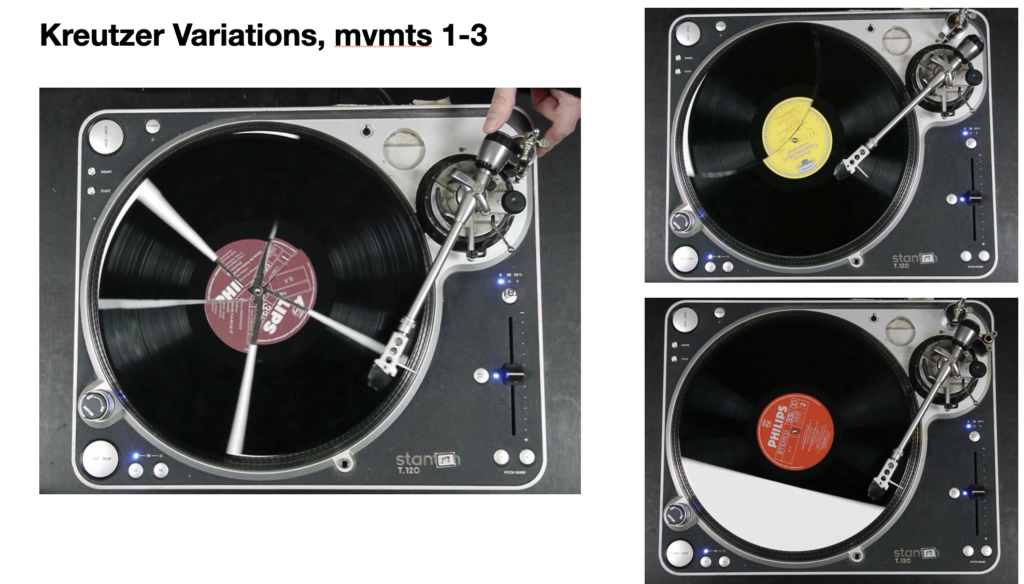
I have spent most of my adult life trying not to sound like any of my forebears, since being authentic for me means sounding the way I want to and not the way I am supposed to. However, one of the most rewarding collaborations I have had consists of doing the polar opposite: trying to make as exact a copy of a previous recording as I can.
The sound art duo Vinyl- Terror- & -Horror, that is, Greta Christensen and Camilla Sorensen (http://www.vinylterrorandhorror.com/), were educated as sculptors but soon became specialized in the use of vinyl records in different contexts– as installations, as sculptures, and as live turntable shows where they use broken vinyl records to evoke associations from genres rather than from specific works. These associations are used to de- and recontextualize what we take for granted about a musical style and the ways that these styles affect us. What happens, at least in my head and in those of many others who hear their music, is that their techniques shine a light on playing styles as separate musical events, free from context. These events are then put into an order where instead of the individual notes being important, it is the order of gestures that evokes a musical form. The effect is often humorous, because it shows our desire to sound like our forebears for what it is: an attempt to fit into a certain time and place that has nothing to do with our present. So in order to be authentic, we have to be as inauthentic as possible, following instructions to the letter.
I have worked with them on several pieces for myself and for other ensembles, but for the Kreutzer Variations we wanted to see what would happen if we concentrated on one piece and not on the juxtaposition of different styles. So they created a variation on the Kreutzer Sonata for myself, Rei and film. The score is a filmed version of a broken LP with the three different movements of the Kreutzer. We then are supposed to approximate as closely as possible the sounds on the film. These sounds have been transcribed into notes for the original setting of violin and piano and performed in sync with a silent version of the film. The film allows the audience to witness the processes involved in the creation of the sounding results while they are being performed live. The visible hand of the DJ guiding the phonograph needle reinforces the feeling of the musicians being steered by a higher power, like puppets, as they in fact are in so many institutional classical music performances. Here, however, instead of unreflected playing styles being utilized in order to reinforce a questionable power structure, they and their decontextualization are instead used towards an artistic end that highlights the assumptions underpinning a mainstream interpretation. So in this case, instead of using contemporary and/or personal interpretive techniques to enrich the musical experience, we are forced to attempt to sound as much like a previous recording as possible in order for the recontexualization to be effective.
Another film of the record with our sounds on the left and the original recording sounds on the right can be found here.
